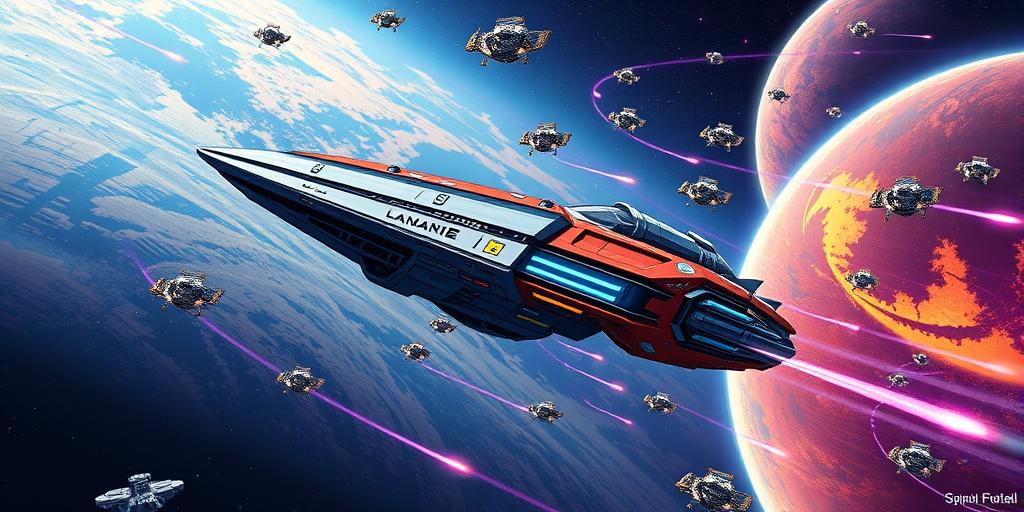Prepare to have your mind blown! The cosmos, once a realm of unreachable dreams, is on the verge of a technological revolution. Forget everything you thought you knew about space exploration; the Internet of Things (IoT) is poised to rewrite the rules of the game. We’re talking faster, safer, and more efficient missions to the farthest reaches of our solar system and beyond. Get ready to explore the incredible impact of IoT on space exploration in this in-depth article.
Revolutionizing Communication: IoT’s Role in Deep Space Networking
Imagine a spacecraft, light-years from Earth, seamlessly communicating with mission control. No more frustrating delays, lost signals, or data bottlenecks. IoT’s network of interconnected devices allows for a robust and responsive system, facilitating real-time monitoring of vital spacecraft systems. This is crucial for addressing emergencies promptly, optimizing mission parameters, and facilitating scientific discovery in remote locations.
Enhanced Data Acquisition and Transmission
IoT sensors can be strategically deployed on spacecraft, rovers, and habitats to monitor a variety of parameters. Data like temperature, pressure, radiation levels, and resource usage is captured and transmitted back to Earth at high speeds. This real-time information enables swift adjustments and proactive measures, improving the efficiency and effectiveness of missions and ensuring astronaut safety. The integration of edge computing within the IoT network further enhances data processing and reduces the reliance on continuous communication with Earth.
Autonomous Operations and Decision Making
The development of autonomous robots and spacecraft is key to future space exploration. IoT technology paves the way for this by enabling autonomous control systems that can function effectively without constant human intervention. These systems utilize IoT sensors to gather data, process information, and make decisions based on pre-programmed parameters, or even through sophisticated machine-learning algorithms. This is a major step towards reducing mission costs, mitigating risk, and opening up avenues for exploration in more challenging environments.
Enhancing Spacecraft Safety and Reliability
Space travel is inherently risky. But what if we could dramatically reduce that risk with the help of advanced sensor networks? This is the promise of IoT in space. Advanced sensors continuously monitor the spacecraft’s systems, detecting anomalies and potential failures before they escalate into critical problems. IoT networks also provide redundancy, ensuring mission-critical operations continue seamlessly even with partial system failures.
Predictive Maintenance and Anomaly Detection
IoT-based predictive maintenance identifies potential problems before they become emergencies. Real-time monitoring of equipment performance coupled with sophisticated algorithms allows for proactive maintenance, extending the operational lifespan of equipment and reducing mission downtime. Early detection of anomalies ensures immediate action to mitigate potential failures and prevent mission-critical equipment failures.
Improved Astronaut Safety
Beyond spacecraft safety, IoT plays a crucial role in ensuring the wellbeing of astronauts. Wearable sensors that monitor vital signs, activity levels, and environmental conditions provide real-time insights into the astronauts’ health and safety, enabling prompt responses to emergencies and optimized environmental controls. The combination of these advanced systems promotes a safe and healthy environment for astronauts, leading to more effective and efficient missions.
Boosting Scientific Discovery with IoT-Enabled Space Exploration
The potential of IoT in space exploration extends beyond engineering and safety. It opens up unprecedented opportunities for scientific discovery. Imagine connected rovers on Mars, collaboratively exploring the landscape, sharing data, and optimizing search strategies based on findings. IoT enables a powerful synergy between autonomous exploration and centralized data analysis.
Collaborative Robotic Exploration
Multiple IoT-enabled rovers can coordinate exploration efforts, seamlessly sharing data and adjusting exploration strategies in real-time based on new findings. This collaborative approach maximizes exploration efficiency, reducing the time and resources needed for scientific breakthroughs. Think swarms of robots exploring the Martian surface in a coordinated manner, increasing the surface area explored in a shorter time frame.
Enhanced Data Analysis and Collaboration
IoT sensors on spacecrafts and robots produce enormous amounts of data. This wealth of information can be used to develop detailed models of celestial bodies, enhancing our understanding of the universe. IoT networks efficiently transfer this data to Earth, facilitating large-scale scientific collaborations between researchers around the globe. This collaborative approach accelerates scientific discovery and enables a faster pace of innovation.
The Future of Space Exploration is Connected
The Internet of Things is not just a technological advancement; it’s a paradigm shift in how we approach space exploration. From enhanced communication and improved safety to revolutionary scientific discoveries, IoT is paving the way for a new era of cosmic exploration. The possibilities are limitless; we’re only beginning to scratch the surface of what’s possible. Prepare for a future where deep space travel is safer, more efficient, and more productive than ever before!
Ready to delve deeper into the fascinating intersection of IoT and space exploration? Click here to explore the latest research and advancements in this exciting field!




